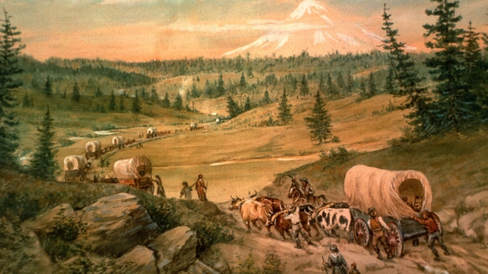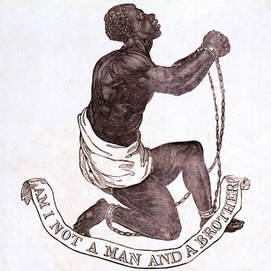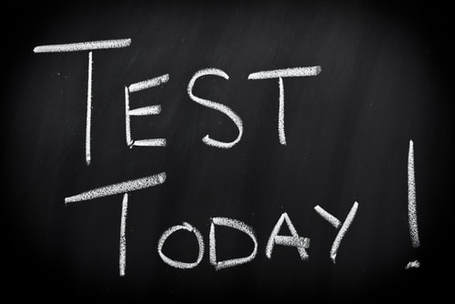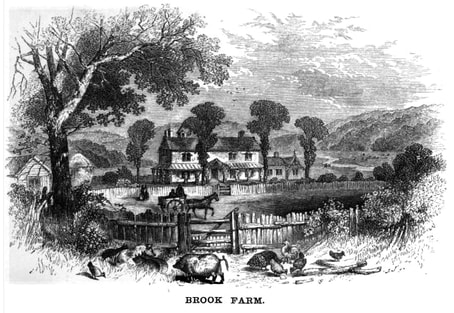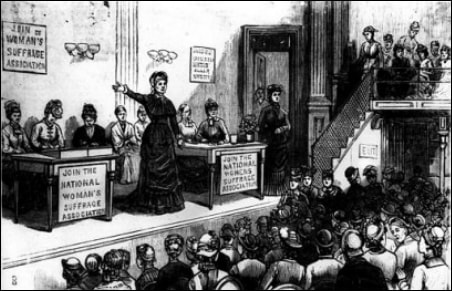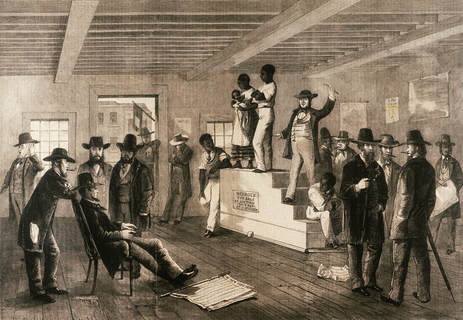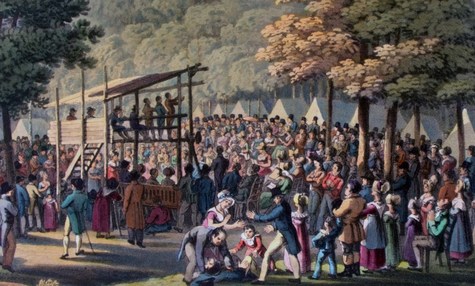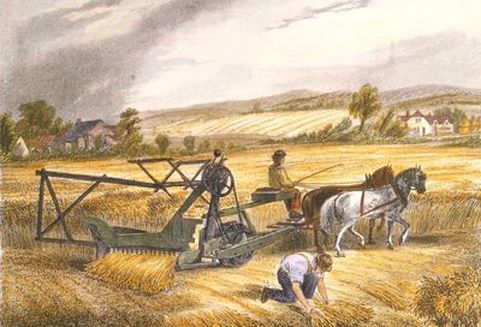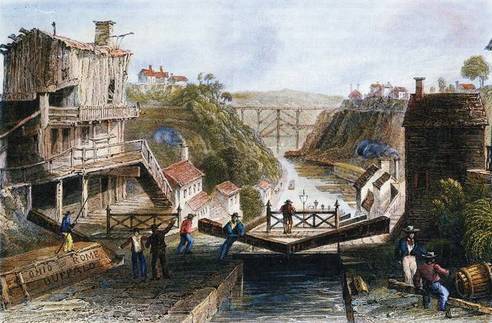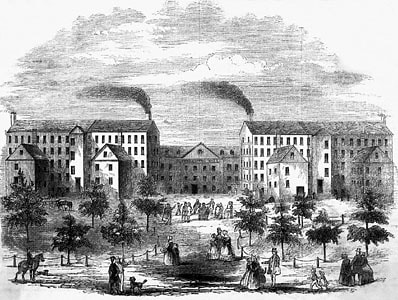|
Learning Target:
I can evaluate the extent to which the nineteenth century belief in “Manifest Destiny” led to the growing sectional conflict in the United States. Critical Vocabulary: Manifest Destiny, John O'Sullivan, President James K. Polk, Oregon Territory, Treaty of 1818, Oregon Trail, Oregon Treaty of 1846, Stephen F. Austin, Antonio Lopez de Santa Anna, Texas Revolution, Battle of the Alamo, Goliad Campaign, General Sam Houston, Battle of San Jacinto, Election of 1844, James K. Polk, John Slidell, John C. Frémont, General Zachary Taylor, Mexican American War, “Spot Resolutions,” “Civil Disobedience,” Battle of Buena Vista, “Bear Flag Revolt,” General Winfield Scott, Treaty of Guadalupe-Hidalgo, Wilmot Proviso, “Popular Sovereignty,” Lewis Cass Today's Agenda:
Homework: Manifest Destiny Tentative Test Date: December 11
0 Comments
Learning Target:
I can describe the social changes that took place in the United States from 1790 to 1860, & I can analyze their effects on the nation. Critical Vocabulary: Romantic Movement, Transcendentalism, Ralph Waldo Emerson, Henry David Thoreau, “On the Duty of Civil Disobedience,” Washington Irving, James Fenimore Cooper, Edgar Allen Poe, Nathaniel Hawthorne, Herman Melville, Walt Whitman, Second Great Awakening, Charles Grandison Finney, Oberlin College, New Harmony, Brook Farm, Shakers, Oneida Colony, Joseph Smith, Church of Jesus Christ of Latter-day Saints, Brigham Young, Thomas H. Gallaudet, Dorothea Dix, Horace Mann, Catharine Beecher, Temperance Movement, American Temperance Union, Neal Dow, Sarah and Angelina Grimké, Sojourner Truth, Lucretia Mott, Elizabeth Cady Stanton, Seneca Falls Convention, "Declaration of Sentiments and Resolutions," Susan B. Anthony, Elizabeth Blackwell, "Peculiar Institution," American Colonization Society, Republic of Liberia, Nat Turner's Rebellion, William Lloyd Garrison, The Liberator, American Anti-Slavery Society, Frederick Douglass, "Gag Rule," Liberty Party Today's Agenda:
Homework: Manifest Destiny Tentative Test Date: December 11 Learning Target:
I can describe the social changes that took place in the United States from 1790 to 1860, & I can analyze their effects on the nation. Critical Vocabulary: Romantic Movement, Transcendentalism, Ralph Waldo Emerson, Henry David Thoreau, “On the Duty of Civil Disobedience,” Washington Irving, James Fenimore Cooper, Edgar Allen Poe, Nathaniel Hawthorne, Herman Melville, Walt Whitman, Second Great Awakening, Charles Grandison Finney, Oberlin College, New Harmony, Brook Farm, Shakers, Oneida Colony, Joseph Smith, Church of Jesus Christ of Latter-day Saints, Brigham Young, Thomas H. Gallaudet, Dorothea Dix, Horace Mann, Catharine Beecher, Temperance Movement, American Temperance Union, Neal Dow, Sarah and Angelina Grimké, Sojourner Truth, Lucretia Mott, Elizabeth Cady Stanton, Seneca Falls Convention, "Declaration of Sentiments and Resolutions," Susan B. Anthony, Elizabeth Blackwell, "Peculiar Institution," American Colonization Society, Republic of Liberia, Nat Turner's Rebellion, William Lloyd Garrison, The Liberator, American Anti-Slavery Society, Frederick Douglass, "Gag Rule," Liberty Party, Today's Agenda:
Homework: Antebellum Reform Movements Tentative Test Date: October 27 Learning Target:
I can describe the social changes that took place in the United States from 1790 to 1860, & I can analyze their effects on the nation. Critical Vocabulary: Romantic Movement, Transcendentalism, Ralph Waldo Emerson, Henry David Thoreau, “On the Duty of Civil Disobedience,” Washington Irving, James Fenimore Cooper, Edgar Allen Poe, Nathaniel Hawthorne, Herman Melville, Walt Whitman, Second Great Awakening, Charles Grandison Finney, Oberlin College, New Harmony, Brook Farm, Shakers, Oneida Colony, Joseph Smith, Church of Jesus Christ of Latter-day Saints, Brigham Young, Thomas H. Gallaudet, Dorothea Dix, Horace Mann, Catharine Beecher, Temperance Movement, American Temperance Union, Neal Dow, Sarah and Angelina Grimké, Sojourner Truth, Lucretia Mott, Elizabeth Cady Stanton, Seneca Falls Convention, "Declaration of Sentiments and Resolutions," Susan B. Anthony, Elizabeth Blackwell, "Peculiar Institution," American Colonization Society, Republic of Liberia, Nat Turner's Rebellion, William Lloyd Garrison, The Liberator, American Anti-Slavery Society, Frederick Douglass, "Gag Rule," Liberty Party, Today's Agenda:
Homework: Antebellum Reform Movements Tentative Test Date: October 27 Learning Target:
I can describe the social changes that took place in the United States from 1790 to 1860, & I can analyze their effects on the nation. Critical Vocabulary: Romantic Movement, Transcendentalism, Ralph Waldo Emerson, Henry David Thoreau, “On the Duty of Civil Disobedience,” Washington Irving, James Fenimore Cooper, Edgar Allen Poe, Nathaniel Hawthorne, Herman Melville, Walt Whitman, Second Great Awakening, Charles Grandison Finney, Oberlin College, New Harmony, Brook Farm, Shakers, Oneida Colony, Joseph Smith, Church of Jesus Christ of Latter-day Saints, Brigham Young, Thomas H. Gallaudet, Dorothea Dix, Horace Mann, Catharine Beecher, Temperance Movement, American Temperance Union, Neal Dow, Sarah and Angelina Grimké, Sojourner Truth, Lucretia Mott, Elizabeth Cady Stanton, Seneca Falls Convention, "Declaration of Sentiments and Resolutions," Susan B. Anthony, Elizabeth Blackwell, "Peculiar Institution," American Colonization Society, Republic of Liberia, Nat Turner's Rebellion, William Lloyd Garrison, The Liberator, American Anti-Slavery Society, Frederick Douglass, "Gag Rule," Liberty Party, Today's Agenda:
Homework: Antebellum Reform Movements Tentative Test Date: October 27 Content Standards:
Students will analyze how history is a series of connected events shaped by multiple cause and effect relationships, tying past to present. Learning Target: I can describe the social changes that took place in the United States from 1790 to 1860, & I can analyze their effects on the nation. Critical Vocabulary: Romantic Movement, Transcendentalism, Ralph Waldo Emerson, Henry David Thoreau, “On the Duty of Civil Disobedience,” Washington Irving, James Fenimore Cooper, Edgar Allen Poe, Nathaniel Hawthorne, Herman Melville, Walt Whitman, Second Great Awakening, Charles Grandison Finney, Oberlin College, New Harmony, Brook Farm, Shakers, Oneida Colony, Joseph Smith, Church of Jesus Christ of Latter-day Saints, Brigham Young, Thomas H. Gallaudet, Dorothea Dix, Horace Mann, Catharine Beecher, Temperance Movement, American Temperance Union, Neal Dow, Sarah and Angelina Grimké, Sojourner Truth, Lucretia Mott, Elizabeth Cady Stanton, Seneca Falls Convention, "Declaration of Sentiments and Resolutions," Susan B. Anthony, Elizabeth Blackwell, "Peculiar Institution," American Colonization Society, Republic of Liberia, Nat Turner's Rebellion, William Lloyd Garrison, The Liberator, American Anti-Slavery Society, Frederick Douglass, "Gag Rule," Liberty Party, Today's Agenda:
Homework: The Narrative of the Life of Frederick Douglass, Antebellum Reform Movements Tentative Test Date: October 27 Content Standards:
Students will analyze how history is a series of connected events shaped by multiple cause and effect relationships, tying past to present. Learning Target: I can describe the economic changes that took place in the United States from 1790 to 1860, & I can analyze their effects on the nation. Critical Vocabulary: “Black Forties,” Political Machines, “Tammany Hall,” “Know-Nothing” Party, Samuel Slater, Eli Whitney, Charles Goodyear, Samuel Morse, Elias Howe, Lowell Mills, Commonwealth v. Hunt, Preemption Act of 1830, Homestead Act, John Deere, Cyrus McCormick, “National Road,” Robert Fulton, Governor DeWitt Clinton, Erie Canal, Baltimore and Ohio Railroad, Clipper Ship, Pony Express Today's Agenda:
Homework: The Narrative of the Life of Frederick Douglass, The Market Revolution Tentative Test Date: October 27 Content Standards:
Students will analyze how history is a series of connected events shaped by multiple cause and effect relationships, tying past to present. Learning Target: I can describe the economic changes that took place in the United States from 1790 to 1860, & I can analyze their effects on the nation. Critical Vocabulary: “Black Forties,” Political Machines, “Tammany Hall,” “Know-Nothing” Party, Samuel Slater, Eli Whitney, Charles Goodyear, Samuel Morse, Elias Howe, Lowell Mills, Commonwealth v. Hunt, Preemption Act of 1830, Homestead Act, John Deere, Cyrus McCormick, “National Road,” Robert Fulton, Governor DeWitt Clinton, Erie Canal, Baltimore and Ohio Railroad, Clipper Ship, Pony Express Today's Agenda:
Homework: The Narrative of the Life of Frederick Douglass, The Market Revolution Tentative Test Date: October 27 Content Standards:
Students will analyze how history is a series of connected events shaped by multiple cause and effect relationships, tying past to present. Learning Target: I can describe the economic changes that took place in the United States from 1790 to 1860, & I can analyze their effects on the nation. Critical Vocabulary: “Black Forties,” Political Machines, “Tammany Hall,” “Know-Nothing” Party, Samuel Slater, Eli Whitney, Charles Goodyear, Samuel Morse, Elias Howe, Lowell Mills, Commonwealth v. Hunt, Preemption Act of 1830, Homestead Act, John Deere, Cyrus McCormick, “National Road,” Robert Fulton, Governor DeWitt Clinton, Erie Canal, Baltimore and Ohio Railroad, Clipper Ship, Pony Express Today's Agenda:
Homework: The Narrative of the Life of Frederick Douglass, The Market Revolution Tentative Test Date: October 27 |
History, although sometimes made up of the few acts of the great, is more often shaped by the many acts of the small.
-Mark Twain AnnouncementsMay 4: No School ResourcesArchives
May 2018
Visitors |
